| By Massad Ayoob |  |
| Issue #128 • March/April, 2011 |
Dave writes, “A few weeks ago I had to shoot a skunk in the chicken house, but the old long-barreled Sears semi-auto proved unwieldy as I tried to take aim at him.My old friend (and publisher) Dave Duffy suggested my topic for this month in Backwoods Home. He had a bit of an epiphany in a critter eradication situation.
“Since then I attended a preparedness show in Utah where a gun seller was displaying a short-barreled Remington 870 with extended magazine and high quality LED light toward the front. It would have been perfect for the situation above. (I’ve had to shoot skunks and rats in the chicken house on at least a half dozen occasions.) It also looked way cool! You operated the LED light with your left thumb. He was charging about $1500 for it but it was all high quality. I’m thinking of buying one.
“It occurred to me that this shotgun would double nicely as a home protection gun. I’ve used my old Sears shotgun in “practical” situations more than any gun in my home, even though it’s the least expensive of any firearm I own.”
There’s a lot to be said for a maneuverable firearm that has a light attached. (In police work, we’ve come to call it “white light,” to distinguish it from laser sights and from hand-held flashlights.)
When the SureFire company figured out how to attach them to pistols, LAPD SWAT quickly glommed onto them for their .45 caliber semiautomatic sidearms, starting a trend nationwide. The next cops to go with light-mounted guns were K-9 officers. During a dangerous manhunt in the woods, backyards, or alleys, the K-9 cops only had two hands with which to do three jobs: keep hold of the dog’s lead, hold a gun, and hold a light. Attaching the light to the gun was a perfect fit for their mission.
|
The next step in development was smaller lights, sometimes combined with laser sights, which quickly slid on and off a rail that was integral to the gun. Heckler and Koch started the trend in the early 1990s with their USP (Universal Service Pistol), whose polymer frame was molded to take a proprietary quick on/quick off light unit. This soon gave way to the universal-fit Picatinny Rail, now available for military style rifles, standard on modern police service pistols, and even available on some shotguns. In Iraq and Afghanistan, the light mounted on a soldier’s weapon can mean the difference between life and death.
And, as my friend Dave has noted, this concept has huge potential in routine rural living applications.
|
The backwoods gun & light
When you have to shoot a critter in the dark on your rural property, a light attached to the gun can be a huge help. Let’s start by looking at the rationale of the concept.
The light allows you to confirm identification of the target before you press the trigger. You’re awakened at 2 a.m. by furious barking, growling, and assorted commotion outside the house. You emerge to find your dogs fighting with a coyote. As you raise your firearm, you want to be damn sure that the gun is aimed at the coyote, not one of your own dogs. Powerful illumination that’s running its beam in line with your gun barrel helps greatly to achieve this.
Even if you have glow-in-the-dark Tritium night sights, in serious darkness this just gives you a good aim at something you can’t otherwise identify. Flicking on a powerful gun-mounted light allows you that critically important last-second verification that what you are about to kill, is what you intended to shoot. If it isn’t what you came out to shoot, the light has saved the life of a loved one or a pet or some of your own livestock.
The light allows you to extend your field of view. One cornerstone rule of firearms safety is, “always be sure of your target and what is behind it.” As you emerge from your farmhouse after hearing the ruckus in the chicken coop, the light streaming out from your kitchen door may illuminate the predator from which you are trying to save your poultry…but the light fades at a distance, and what is behind the limited area of light is now in inky blackness. Are you sure that your son-in-law isn’t running up behind the animal, in your line of fire, responding to the same commotion? Or that your beloved family dog isn’t running toward the problem from the other direction? The powerful light mounted on the gun will pierce the darkness much farther, hopefully far enough to tell you whether or not you have a safe “shooting backdrop.”
The light allows you to track your target. You’ve fired the shot. The recoil kicks the gun up into your line of sight, blocking your view, and when you bring it down the target is gone, though you can hear its running feet. With the powerful beam of light at the end of your gun, you are much more likely to find the threat, get it back in your sights, and make the finishing shot if that is necessary.
The light “changes the living target’s channel.” When an animal is caught in bright light, it tends to freeze. This is where the term “deer in the headlights” came from. It may just make the wolf that was entering the lamb’s pen hold still long enough for you to make the perfect shot that ends the matter. With humans, I’ve found the reverse to be true: a man will tend to turn violently away from bright light that hits him in his eyes, particularly when his pupils are dilated after some time in the dark. If we’re talking an armed two-legged intruder instead of a merely noxious four-legged one, you wouldn’t be firing a deadly weapon at him unless he was about to kill or cripple you or your loved one. Wouldn’t it be kind of nice if at this moment something could make him turn violently away from you or his other intended target, in a fashion that momentarily disorients him? What a coincidence: that seems to be exactly what bright light in the eyes in the dark causes people to do.
|
Caveat
When we mount a light to a firearm, the key thing we have to remember is that in the combination of light and deadly weapon, the operative term is deadly weapon. This means that we cannot use the combined unit as an ordinary flashlight to go out looking for things…because anything that’s in the beam of the flashlight now has a lethal weapon pointed at it.
In a highly publicized case in Texas in 2010, an officer making a
gunpoint arrest with a pistol fitted with a flashlight apparently fumbled when he tried to turn off the light, and accidentally discharged the weapon. The bullet struck and killed the compliant, surrendered suspect at whom the gun and the light were pointed. This sort of thing is the worst case scenario.
Let’s say you’ve heard that proverbial “thing that goes bump in the night.” You’ve grabbed your light-mounted gun to go looking for it, and the light coaxial to the gun barrel is the only illumination you have. You go searching room to room. Searching a room isn’t looking at one thing, it’s looking at dozens of things. Now, three or four rooms into the search, your bright beam illuminates the hundredth thing you’ve looked at … and it’s an unexpected human being.
You are, naturally, startled. Startle reflex tightens our muscles. In the hands, the strongest muscles are the flexor muscles, and one is attached to your trigger finger. Before you know it, the gun has fired…and the person in the beam that’s in line with your gun barrel, the person who startled you, is one of your kids.
Dunno about you, but there are folks who’d be thinking of using up one more bullet on themselves, at that point.
Right now, some readers into shooting discipline are silently yelling, “That stupid Ayoob! Doesn’t he know that real professionals keep their finger off the trigger until they intend to shoot?” Yeah, he does. But he also is familiar with the European study of highly-trained SWAT cops who put their finger on their triggers during high-stress simulations when they didn’t realize they had done it. He also is aware that only a perfect human being can be 100% certain of keeping their finger off the trigger, and a 100% perfect human being hasn’t existed for at least 2011 years.
|
But let’s say you’re perfect right now, and you don’t pull the trigger. Your kid still realizes that you pointed a loaded gun at him while searching with that light under the muzzle. You think the kid’s gonna get over that by tomorrow? You think that won’t be something the kid remembers at your funeral after you die of old age?
Thus the cardinal rule with this technology: Don’t use the gun-mounted light as a flashlight. It’s emergency lighting for when the time to shoot is upon you.
Right now, when I get up from this keyboard and go to bed, there will be a Springfield Armory XD pistol at bedside, loaded with 14 rounds of high-tech jacketed hollow point .45 ammunition and mounting an X-series SureFire light on its frame. But next to it will be a regular SureFire flashlight, and if I should feel a need to go looking for trouble, the gun with its turned-off light will be in my dominant hand in a retention position, and the separate light in the free hand will be the one that beams through the darkness, going quickly on and off as I move so it doesn’t spotlight my own position.
Other gun/light options
There are lots of ways to coordinate a gun with a separate flashlight. I’ve developed a couple of techniques for that myself that are widely taught in law enforcement and the military today. But I’ll be the first to tell you that being able to dedicate both hands to holding the gun steady, instead of one hand being partially or entirely dedicated to holding the illumination, results in faster, better hits.
One technique that everyone seems to miss (perhaps because it’s not possible for a lone shooter) is the two-person technique. Partner A controls the gun, and Partner B runs the light. In a fast-breaking SWAT or self-defense situation, it’s unlikely that this will be possible. But, if there are two of you responding when you have the proverbial “fox at the henhouse” in a farm situation, it can work remarkably well.
Let me share with you a situation I saw on my own rural property some years ago. It involved a fox, if not a henhouse. It was an outdoor barbecue party with dozens of folks in attendance. Night had fallen, we were still outdoors in balmy weather, and all evening we had been looking at a strangely-acting fox that had been circling closer and closer to where the people were at the periphery of the house. It was exhibiting signs of rabies, and we decided that “for the good of the order,” if it showed up again it would be euthanized. (Foxes were a protected species, but the law made an exemption for obviously rabid animals.)
Sure enough, the furry little red dude showed up again. One of those present, an off-duty cop who worked that jurisdiction, drew a SureFire 6P and lit up the beast in the now-dark back acres, less than half a football field away from folks it could bite. Another of our party drew a Glock .45, took a strong two-handed Isosceles stance, and fired a single shot. The single Speer Gold Dot hollow point bullet hit it center chest and killed it, instantly and humanely. The shooter told me later that the other man’s light on the animal silhouetted it perfectly in his sights, giving him a sight picture that looked like something out of a marksmanship manual.
Decades ago, on one of my safaris in South Africa, a friend on the grounds there asked us to come by and help us rid his farm of predators during a legal nocturnal hunt. We did so. The most efficient manner proved to be one person manning the light, and the other manning the gun. We didn’t use shotguns, but it worked with rifle and it worked with revolver. Being able to dedicate both hands and all the fingers to holding the gun steady and making the shot was wondrously effective.
Will “one person on the light and another on the gun” work for combat? Probably not. The situation in front of the gun is too unpredictable, and coordination between two people in rapidly-evolving return fire situations will be too problematic. For two rural home dwellers working together in predator control on the property, though, it makes sense.
As a kid growing up in New Hampshire, I knew a lot of folks who stalked raccoons. The protocol for these “‘coon hunters” was to tree the animal with dogs, then shoot it in the tree. Because it was perfectly legal to hunt them at night (and perfectly logical to do so, since they were nocturnal), all manner of light-and-gun combinations were cobbled together. But what most of the seasoned coon hunters came up with was the protocol of Hunter A runs the light, and Hunter B runs the .22. It was simply the most efficient way to handle that particular shooting scenario.
|
An analogy
In my younger days, I didn’t like the idea of a gun-mounted light at all. Experience changed my view on that. One night in the early 1990s, Palm Beach County (Florida) Sheriff’s Department hosted the annual conference of the American Society of Law Enforcement Trainers. I was that organization’s chair of the firearms committee, a position I held for 19 years. During the seminar, I took a “busman’s holiday” and went along with PBSO deputies for a raid on a drug house. As we were debarking from the SWAT van, one of the team members pointed to a window in the target house and yelled a warning.
All around me, guns were coming up, and my hand went immediately to the D.R. Middlebrooks Custom Colt .45 automatic in my own holster. But before I cleared leather, team leader Bill Testa had the SureFire light on his Benelli automatic shotgun on the window, and I saw the man behind the glass spin away from the blinding beam, his hands coming up empty. Moments like that teach you the value of gun-mounted lighting.
If you’ve been reading Backwoods Home Magazine for a while, you know one of the reasons I like a telescopic sight on a hunting rifle is the safety factor. Its magnification lets you see what you’re shooting at. If you were negligent enough to use your riflescope as binoculars to scan the woods and look for things, you would eventually see an innocent human being in that scope. You’d be pointing a lethal weapon at someone you had no right to point a gun at. You could expect to lose your hunting license, and even be charged with the very serious felony of Aggravated Assault.
But, if you thought you had spotted a deer and aimed at it, the magnification of the scope would be a last-ditch verification of your target. Was it a legal buck with antlers, or an illegal doe standing where branches were behind her head? Was it really a white-tailed deer, or was it some guy in gray-brown Carhartts with a white handkerchief sticking out of his hip pocket? The multiple-times magnification of the scope can verify the target before it’s too late, thus preventing a terrible mistake.
I submit that the light on the gun is exactly the same. You don’t go looking for things with it, or you’ll end up pointing a gun at someone you have no right to take at gunpoint. You use binoculars or a spotting scope to scan the hunting ground, and a separate flashlight for searching.
But, if you thought you spotted something you needed to shoot, the brilliant white beam of the attached gun light gives you that last-ditch target verification. It can help prevent tragic mistakes.
And for all these reasons, I think it can make huge sense for backwoods home firearms.


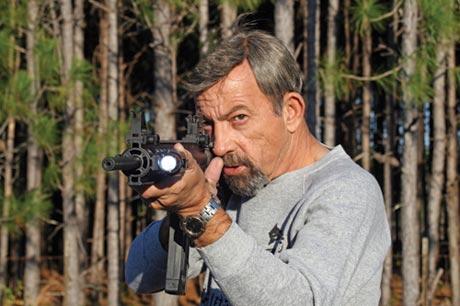





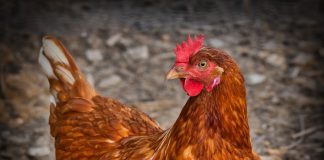





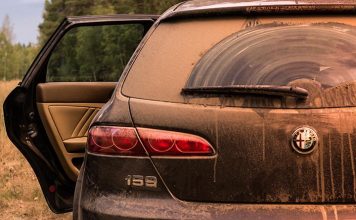
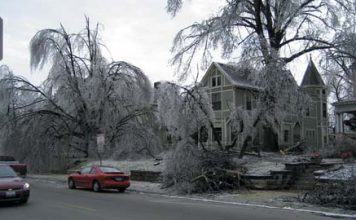
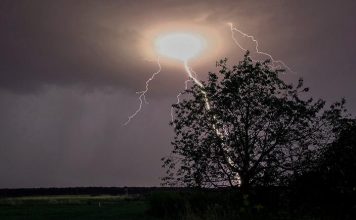



I remember some of the convoluted ways to illuminate for shooting at night: one-handed shooting, holding the Kel-Lite beneath the forearm of the shotgun (talk about difficult second shots) etc. Back then we taught those methods because there were no lightweight, sufficiently bright lights that were mountable except for Mini-Mags…marginal and nearly impossible to manipulate. (John Peters’ Kubotan with Flashlight techniques were the only tactical use I ever found for the things.) Also, the philosophy back then was that having the light in front of your body made it a target. Sure wish we’d had the SureFire back in those days.
Neat to hear mention of ASLET after all these years (I was a charter member) and my old acquaintance Bill Testa, then with PBSO. Good article. Us old guys need to keep on larnin’.
I find that any of the modern weapons mounted lights (with more than 150 Lumens) will light up an entire room when held at “low ready”. The muzzle is pointed only in the direction and is safely pointed at the floor.
I have now equipped my defensive Weapons with Laser Sights, which should allow me to wait in the room where I acquire the weapon, with the laser sight turned off, until the intruder, reaches a point where I can immediately neutralize the intruder, before they’ll have time, or opportunity, to see the Laser Beam, or react to it, before being Neutralized!
There being sufficient Lighting, even at night, in the house to allow a one legged 83+ YOA like me to employ a firearm whereas I would be very limited in available movement without my “Peg Leg”!